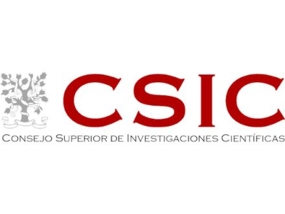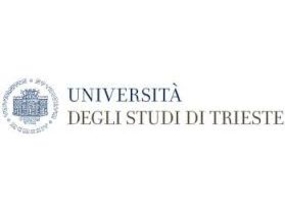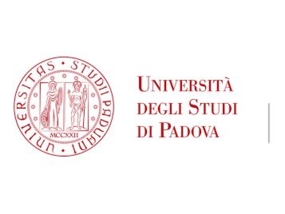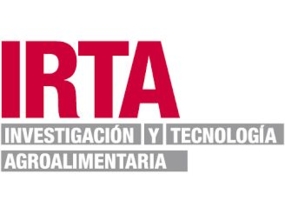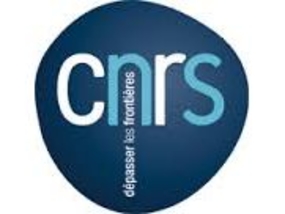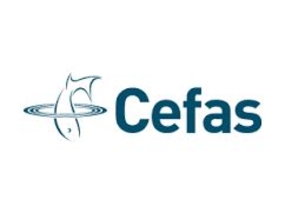VIVALDI-related articles published in 2019
Manuscript: High individual variability in the transcriptomic response of Mediterranean mussels to Vibrio reveals the involvement of myticins in tissue injury. (Magalí Rey-Campos, Rebeca Moreira, Valentina Valenzuela-Muñoz, Cristian Gallardo-Escárate, Beatriz Novoa, Antonio Figueras)
Published in Scientific Reports, 2019 DOI: 1038/s41598-019-39870-3.
VIVALDI partner involved: CSIC
The usual way to do experiments is to analyze a group of individual animals altogether. In this work, we analyzed the individual response of mussels before and after being infected with a very common pathogenic bacterium in aquaculture: Vibrio splendidus. We demonstrated a great variability in the defense response among individual mussels. Each animal showed an exclusive repertoire of genes not shared with other individuals. We also found that a simple injection without bacteria was a stimulus strong enough to mobilize immune cells. It suggests a reaction against a tissue injury and the specific involvement antimicrobial peptides to this danger signal.
---
Manuscript: Genomics and immunity of the Mediterranean mussel Mytilus galloprovincialis in a changing environment (Antonio Figueras, Rebeca Moreira, Marta Sendra, Beatriz Novoa)
Published in Fish & Shellfish Immunology, 2019 DOI: https://doi.org/10.1016/j.fsi.2019.04.064 (1 year embargo)
VIVALDI partner involved: CSIC
The Mediterranean mussel (Mytilus galloprovincialis) is a marine invasive species cultured all over the world. Mussels are an appreciated resource in local aquaculture enterprises because of their robust production and resilience that translates into a reliable economic value. In the last years, the knowledge about its immune system has greatly improved but there are still many questions to be answered. One of them is why mussels, with their high filtering activity, are able to be exposed to a high number of potential pathogens without getting infected and without developing an elevated inflammatory response. The sequencing of the mussel genome has revealed a very complex organization with high heterozygosity, abundance of repetitive sequences and extreme intraspecific sequence diversity among individuals, mainly in immune related genes. Among those genes, antimicrobial peptides are the most expressed gene families in mussels, highly polymorphic and with antimicrobial effect against molluscs pathogens, but also against pathogens of lower vertebrates and humans. The combination of a complex genome with the adaptation of mussel immune system to a changing environment could explain this high variability, not only in immune-related genes, but also in the functional response among individuals sampled in the same location and date.
---
Manuscript: Immune Tolerance in Mytilus galloprovincialis Hemocytes After Repeated Contact With Vibrio splendidus (Magalí Rey-Campos, Rebeca Moreira, Marco Gerdo, Alberto Pallavicini, Beatriz Novoa and Antonio Figueras)
Published in Frontiers in Immunology, 2019,
DOI: doi: 10.3389/fimmu.2019.01894
VIVALDI partners involved: CSIC, UNITS
Mediterranean mussels (Mytilus galloprovincialis) are sessile filter feeders that live in close contact with numerous marine microorganisms. As is the case in all invertebrates, mussels lack an adaptive immune system, but they respond to pathogens, injuries or environmental stress in a very efficient manner. However, it is not known if they are able to modify their immune response when they reencounter the same pathogen. In this work, we studied the transcriptomic response of mussel hemocytes before and after two consecutive sublethal challenges with Vibrio splendidus. The first exposure significantly regulated genes related to inflammation, migration and response to bacteria. However, after the second exposure, the differentially expressed genes were related to the control and inhibition of ROS production and the resolution of the inflammatory response. Our results also show that the second injection with V. splendidus led to changes at the transcriptional (control of the expression of pro-inflammatory transcripts), cellular (shift in the hemocyte population distribution), and functional levels (inhibition of ROS production). These results suggest that a modified immune response after the second challenge allowed the mussels to tolerate rather than fight the infection, which minimized tissue damage.
---
Manuscript: An Evolutionary Perspective of Dopachrome Tautomerase Enzymes in Metazoans (Umberto Rosani, Stefania Domeneghetti, Lorenzo Maso, K. Mathias Wegner and Paola Venier)
Published in Genes, 2019, doi: 10.3390/genes10070495
VIVALDI partner involved: UNIPD, AWI
The research team discovered in Crassostrea gigas an enzyme which was so far described in insects, bacteria and funghi. This enzyme seems to be impacted by an OsHV-1 infection.
---
Manuscript: A needle in a haystack: tracing bivalve-associated viruses in high-throughput transcriptomic data (Rosani U, Shapiro M, Venier P, Allam B)
Published in Viruses, 2019, doi: 10.3390/v11030205
VIVALDI partner involved: UNIPD, AWI
Bivalve molluscs thrive in environments rich in microorganisms, such as estuarine and coastal waters, and they tend to accumulate various particles, including viruses. However, the current knowledge on mollusk viruses is mainly centered on few pathogenic viruses. This study was designed to explore the viral abundance and diversity in bivalve mollusks using transcriptomic datasets. The analysis of 58 different species of bivalves has resulted in finding sequences of very diverse and often unknown viruses. These findings set the stage for targeted investigations on the specificity and dynamics of the identified viruses.
---
Manuscript:
Dynamics of the Pacific Oyster pathobiota during mortality episodes in Europe assessed by 16S rRNA gene profiling and a new target enrichment next-generation sequencing strategy.
(Aide Lasa, Andrea di Cesare, Giovanni Tassistro, Alessio Borello, Stefano Gualdi, Dolors Furones, Noelia Carrasco, Deborah Cheslett, Amanda Brechon, Christine Paillard, Adeline Bidault, Fabrice Pernet, Laura Canesi, Paolo Edomi, Alberto Pallavicini, Carla Pruzzo and Luigi Vezzulli)
Published in Environmental microbiology, 2019,
VIVALDI partner involved:
UNIGE, IRTA, MI, CNRS, IFREMER, UNITS
---
Manuscript: Extensive Tandem Duplication Events Drive the Expansion of the C1q-Domain-Containing Gene Family in Bivalves (Marco Gerdo, Samuele Greco, Alberto Pallavicini)
Published in Marine Drgus, 2019, DOI: https://doi.org/10.3390/md17100583
VIVALDI partner involved: UNITS
C1q-domain-containing (C1qDC) proteins are rapidly emerging as key players in the innate immune response of bivalve mollusks. Growing experimental evidence suggests that these highly abundant secretory proteins are involved in the recognition of microbe-associated molecular patterns, serving as lectin-like molecules in the bivalve proto-complement system. Our observations point out that the evolutionary process behind the development of a large arsenal of C1qDC lectin-like molecules in marine bivalves is still ongoing and likely based on an unequal crossing over.
---
Manuscript: Dual analysis of virus‐host interactions: the case of OsHV‐1 and the cupped oyster Crassostrea gigas (Rosani Umberto, Young Tim, Bai Chang‐Ming, Alfaro Andrea, Venier Paola)
Published in Evolutionary bioinformatics, 2019, doi: 10.1177/1176934319831305
VIVALDI partner involved: UNIPD
Analyses of the interactions between Ostreid herpesvirus 1 (OsHV-1) and the bivalve Crassostrea gigas during infection can unveil events that are critical to the emergence and progression of this viral disease and can provide novel strategies for mitigating and preventing oyster mortality. Among the currently used “omics” technologies, dual transcriptomics (dual RNA-seq) coupled with the analysis of viral DNA in the host tissues has greatly advanced the knowledge of genes and pathways mostly contributing to host defense responses. This review explores our current knowledge of “omics” technologies in the study of host-pathogen interactions and highlights relevant applications of these fields of expertise to the complex case of C gigas infections by OsHV-1, which currently threaten the mollusk production sector worldwide.
---
Manuscript: Exposure to TiO2 nanoparticles induces shifts in the microbiota composition of Mytilus galloprovincialis hemolymph (Manon Auguste, Aide Lasa, Alberto Pallavicini, Stefano Gualdi, Luigi Vezzulli, Laura Canesi)
Published in Science of the total environment, 2019, doi.org/10.1016/j.scitotenv.2019.03.133
VIVALDI partner involved: UNIGE, UNITS
It is now recognized that the microbiome - the community of microorganisms that colonize an animal's body and their genomes - play an important role in the health status of all organisms, from nutrient processing to protection from disease. In particular, the interactions between the host innate immune system and the microbiota are crucial in maintaining the whole body's homeostasis. The development of nanotechnology is raising concern on the potential impact of nanoparticles (NPs) on human and environmental health. Titanium dioxide-nTiO2, one of the most widely NP in use, has been shown to affect the gut microbiota of mammals and fish, as well as to potentially alter microbial communities. In the marine bivalve Mytilus galloprovincialis (Mediterranean mussel), nTiO2 has been previously shown to interact with hemolymph components, thus resulting in modulating the immune response. However, no information is available on the possible impact of NPs on the microbiome of marine organisms.
Bivalves host high microbial abundance and diversity. Alteration of their microbiota in response to stressful conditions has been linked to a compromised health status and susceptibility to diseases. In this study, the effects of nTiO2 were confirmed by the increase in the bactericidal activity of the whole hemolymph. These represent the first data on the effects of NPs on the microbiome of marine invertebrates, and suggest that the shift in hemolymph microbiome composition induced by nTiO2 may result from the interplay between the microbiota and the immune system.
---
Manuscript: A study of autophagy in hemocytes of the Pacific oyster, Crassostrea gigas (Picot Sandy, Morga Benjamin, Faury Nicole, Chollet Bruno, Dégremont Lionel, Travers Marie-Agnes, Renault Tristan, Arzul Isabelle)
Published in Autophagy, 2019, doi: 10.1080/15548627.2019.1596490
VIVALDI partner involved: Ifremer
Macro-autophagy is a mechanism that is involved in various cellular processes. This pathway has been described in organisms ranging in complexity from yeasts to mammals, and recent results indicate that it occurs in the mantle of the Pacific oyster, Crassostrea gigas. So far, the autophagy pathway had never been explored in the hemocytes of C. gigas, which play a key role in the defence of the Pacific oyster against pathogens. To investigate autophagy in oyster hemocytes, the same tools as those currently used to monitor this mechanism in mammals were adapted and applied to the hemocytes of the Pacific oyster. Our results demonstrated that autophagy occurs in hemocytes of C. gigas and can be modulated by molecules known to modulate autophagy in other organisms. This study describes an integrated approach that can be applied to investigate autophagy in marine bivalves at the cellular level.
---
Manuscript: Resistance of the oyster pathogen Vibrio tasmaniensis LGP32 against grazing by Vannella sp. marine amoeba involves Vsm and CopA virulence factors (Etienne Robino, Aurore C. Poirier, Hajar Amraoui, Sandra Le Bissonnais, Angélique Perret, Carmen Lopez‐Joven, Jean‐Christophe Auguet, Tristan P. Rubio, Chantal Cazevieille, Jean‐Luc Rolland, Yann Héchard, Delphine Destoumieux‐Garzón, Guillaume M. Charrière)
Published in Environmental microbiology, 2019, DOI: doi:10.1111/1462-2920.14770
VIVALDI partner involved: Ifremer, CNRS
Vibrios are ubiquitous in marine environments and opportunistically colonize a broad range of hosts. Strains of Vibrio tasmaniensis present in oyster farms can thrive in oysters during juvenile mortality events and behave as facultative intracellular pathogen of oyster haemocytes. Herein, we wondered whether V. tasmaniensis LGP32 resistance to phagocytosis is specific to oyster immune cells or contributes to resistance to other phagocytes, like marine amoebae. Altogether, our work indicates that some virulence factors can be involved in multi‐host interactions of V. tasmaniensis ranging from protozoans to metazoans, potentially favouring their opportunistic behaviour.
---
Manuscript: Species-specific mechanisms of cytotoxicity toward immune cells determine the successful outcome of Vibrio infections (Tristan Rubio, Daniel Oyanedel, Yannick Labreuche, Xing Luo, Maxime Bruto, Cristian Chaparro, Marta Torres, Julien de Lorgeril, Philippe Haffner, Jeremie Vidal-Dupiol, Arnaud Lagorce, Bruno Petton, Guillaume Mitta, Annick Jacq, Frédérique Le Roux, Guillaume M. Charrière, Delphine Destoumieux-Garzón)
Published in PNAS, 2019, DOI: https://doi.org/10.1073/pnas.1905747116
VIVALDI partners involved: Ifremer, CNRS
Vibrio species are causal agents of important infectious diseases in humans and animals. Here, we have studied Vibrio infections in an ecologically relevant model host, oyster, for which natural virulent Vibrio strains are available. We have shown that virulent Vibrio species use different mechanisms to evade host cellular defenses. These mechanisms relied on distinct molecular determinants shared between strains of the same Vibrio species, but not between different species. The different mechanisms nonetheless converged on the same crucial outcome, immune cell lysis. Such cytotoxicity enabled virulent strains to cause systemic infections. Species-specific mechanisms that actively target host immunity could be more common than thought among Vibrio species, including human pathogens.
---
Manuscript: Detection and characterisation of Minchinia mytilii n. sp., a haplosporidian parasite of the blue mussel Mytilus edulis (Georgia M. Ward, Stephen W. Feist, Patricia Noguera, Mar Marcos-López, Stuart Ross, Matthew Green, Ander Urrutia, John P. Bignell, David Bass)
Published in Diseases of Aquatic Organisms, 2019, doi: https://doi.org/10.3354/dao03326
VIVALDI partner involved: CEFAS
The edible mussel Mytilus edulis is a major aquaculture commodity in Europe, with 168000 t produced in 2015. A number of abundant, well characterised parasites of the species are known, though none are considered to cause significant mortality. Haplosporida (Rhizaria, Endomyxa) is an order of protistan parasites of aquatic invertebrates, the best studied of which are the oyster pathogens Haplosporidium nelsoni and Bonamia ostreae. While these species are well characterised within their hosts, the diversity, life-cycle and modes of transmission of haplosporidians are very poorly understood. Haplosporidian parasites have previously been reported from Mytilus spp., however the majority of these remain uncharacterised, and no molecular data exist for any species. In this study, we identified 2 novel haplosporidian parasites of M. edulis present in the UK.
----
Manuscript: Extensive Tandem Duplication Events Drive the Expansion of the C1q-Domain-Containing Gene Family in Bivalves (Marco Gerdol, Samuel Greco, Alberto Pallavicini)
Published in Marine Drugs, 2019, DOI: 10.3390/md17100583
VIVALDI partner involved: UNITS
A growing body of evidence suggest that C1q-domain-containing (C1qDC) proteins are involved in the recognition of microbe-associated molecular patterns in bivalve mollusks. These highly abundant secretory proteins act as lectin-like molecules and may trigger the activation of the proto-complement system. In this paper, we investigated the evolutionary mechanisms behind the massive lineage-specific gene family expansion that characterizes bivalves, whose genomes encode several hundred different C1qDc proteins. Our analyses revealed that the overwhelming majority of the 476 oyster C1qDC encoded by the genome of the Eastern oyster Crassostrea virginica are found in dense clusters of tandemly duplicated paralogs, suggesting that unequal crossing over events have played a primary role in the molecular diversification of these important pattern recognition receptors.
----
Manuscript: Detection of isothermally amplified ostreid herpesvirus 1 DNA in Pacific oyster (Crassostrea gigas) using a miniaturised electrochemical biosensor (Anna Toldrà, Dolors Furonesa, Ciara K.O'Sullivan, Mònica Campàs)
Published in Talanta, 2019, DOI: https://doi.org/10.1016/j.talanta.2019.120308
VIVALDI partner involved: IRTA
Given the threat that Ostreid herpesvirus 1 (OsHV-1) poses to shellfish aquaculture, the need for rapid, user-friendly and cost-effective methods to detect this marine pathogen and minimise its impact is evident. In this work, an electrochemical biosensor for the detection of OsHV-1 based on isothermal recombinase polymerase amplification (RPA) was developed. The system was first tested and optimised on maleimide microtitre plates as a proof-of-concept, before being implemented on miniaturised gold electrodes. The biosensor was applied to the analysis of 16 oyster samples from an infectivity experiment, and results were compared with those obtained by qPCR analysis, showing a strong degree of correlation (r = 0.988). The simplicity, rapidity, cost-effectiveness and potential for in-situ testing with the developed biosensor provide a valuable tool for the detection of OsHV-1 in aquaculture facilities, improving their management.


